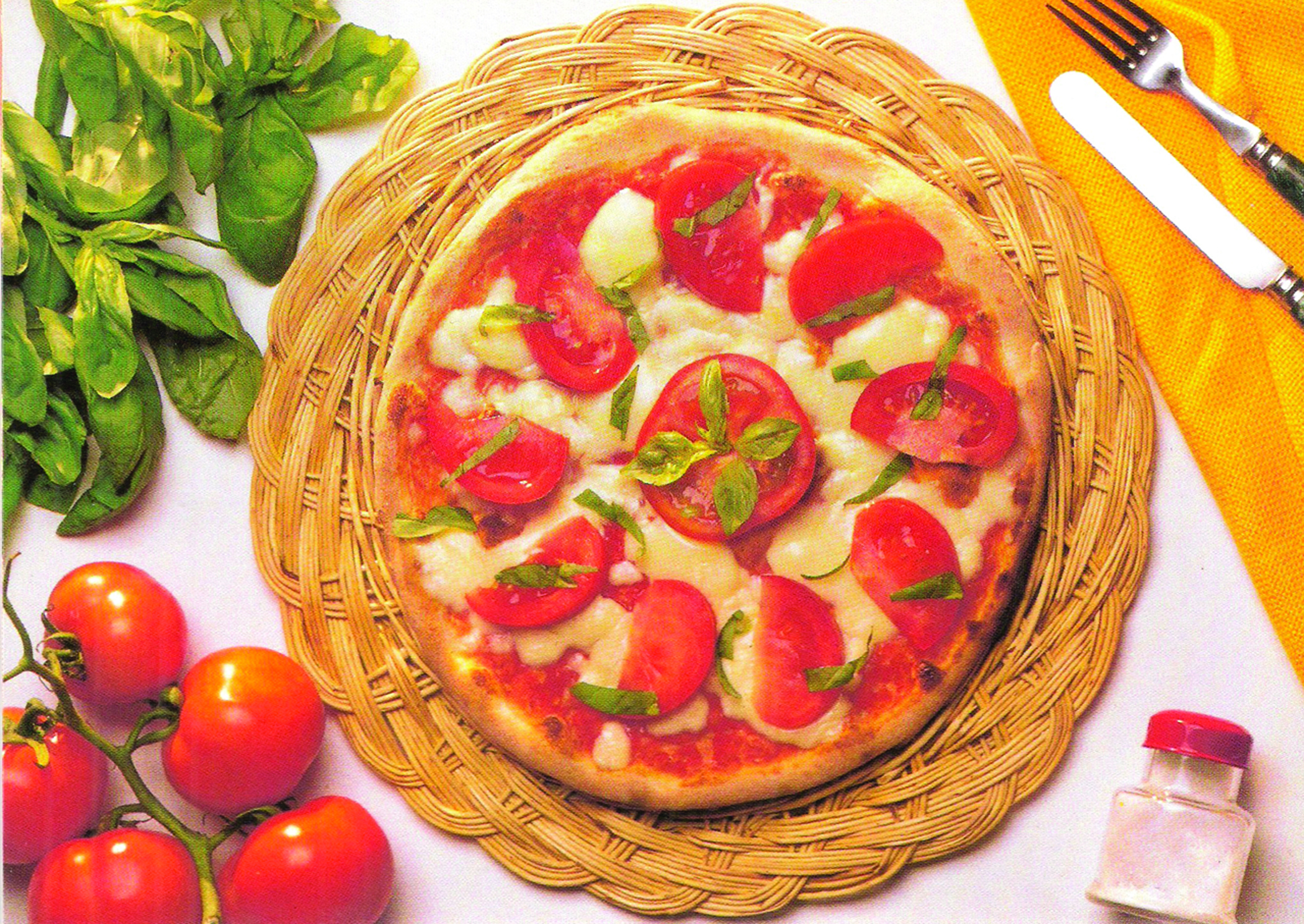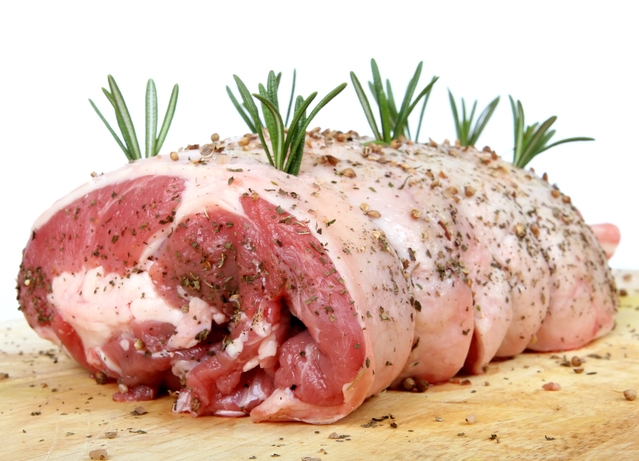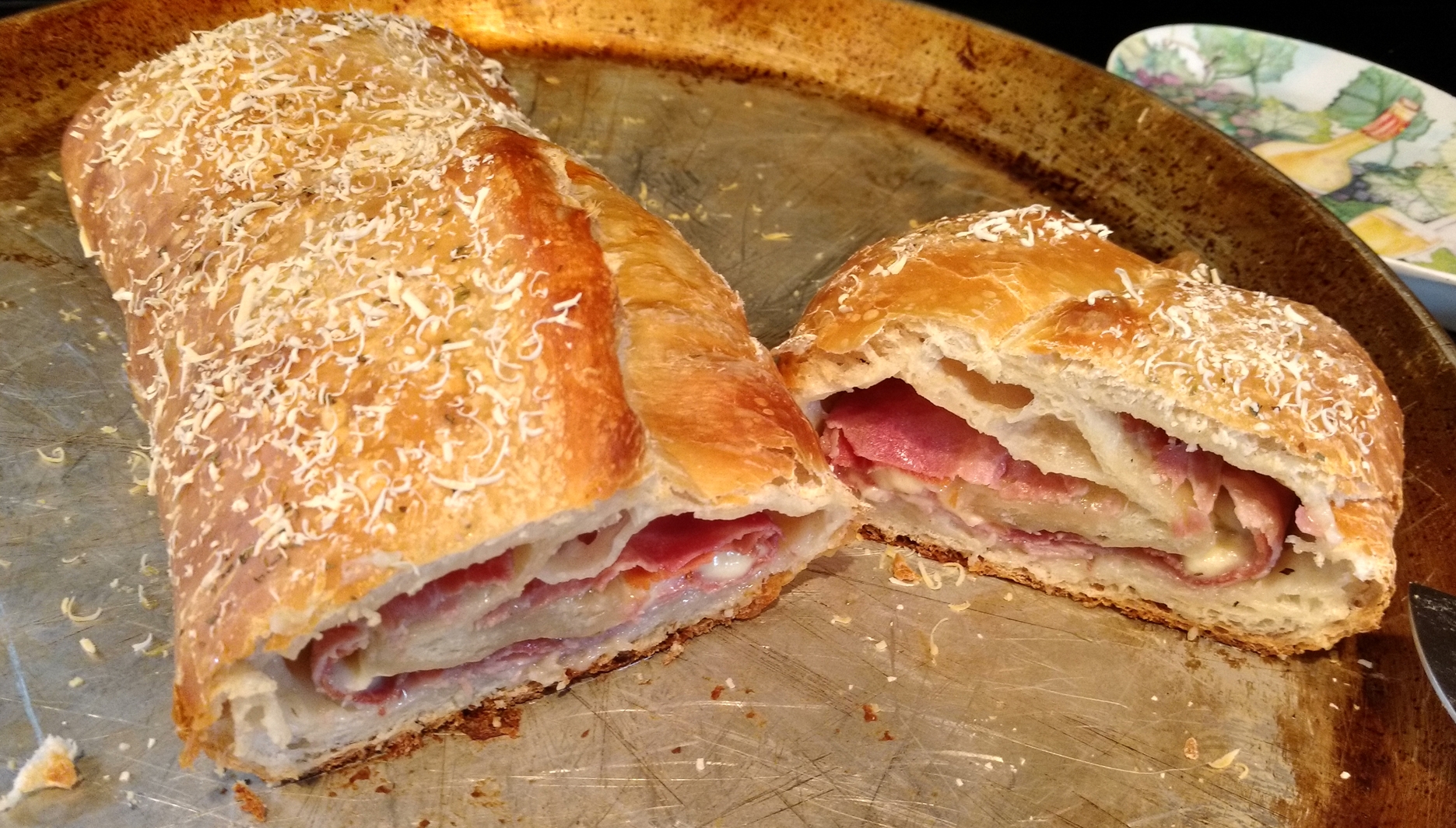There’s nothing quite like eating a panino (small sandwich) of prosciutto sliced thinly and mouth-watering mozzarella made from buffalo milk, usually still warm when you buy it, while listening to the birds singing and the scent of jasmine and oleander wafting through the air. Just the thought of that makes me want to close my eyes and go, “Ahhhhhhhhhh…”, as I am transported back to Selvacava, standing on the balcony of my father’s house, looking at the other towns across the valley on a sunny summer day.

View from the balcony of my dad’s house in Selvacava, province of Frosinone
A lot can be said about Italian cuisine. For one thing, the idea that Italians cook with a lot of garlic is not true. Garlic has a wonderful taste but it should not overpower the main ingredients of the dish. Also, Italians (in Italy) don’t eat spaghetti with their meatballs. The meat usually is eaten after the pasta, as the main course.
In fact, much of what Americans consider to be Italian dishes actually originated in the United States with the many immigrants who came here from Italy at the end of the 1800’s to the early 1900’s. These Italians were mostly poor and once they saw that they could actually buy foods here that were out of the question in Italy because they were so expensive, they adapted their dishes to include all these delicious meats, fish, etc.
But, getting back to real Italian cuisine, it can be traced back to before the Roman Empire, over 2,000 years ago. It started out as Etruscan, but was greatly influenced by the Greeks. It has evolved much over the years with influences from such places as Northern Africa as well as Northern Europe. Northern Italian cuisine has been influenced by Germanic culture, while Southern Italy was influenced by the Arabs. As Italy formed independent city-states during the Middle Ages, each region developed its own cuisine, which is why there are so many differences in typical dishes from one area of Italy to another.
It is believed that what is known today as French cuisine was actually inspired and built upon Italian cuisine. It was introduced to France in the 1600’s by Catherine de’ Medici, of the wealthy and prominent Medici family that came to power in Florence in the 13th century, who brought her personal chefs with her when she married King Henry II.
Today’s Italian cuisine varies from region to region. Because the climate is colder the farther north you go and, therefore, olive groves are scarce, olive oil is not used as much to cook with in the north, but rather the dishes are cooked in butter or lard. Cream or cheese sauces, such as pesto, are popular instead of tomato sauces since most of the dairy farms can be found in regions such as Lombardia and Emilia-Romagna. Polenta and creamy risotto dishes are common, as is filled pasta such as ravioli and tortellini, and game meat dishes, such as rabbit, and osso buco.
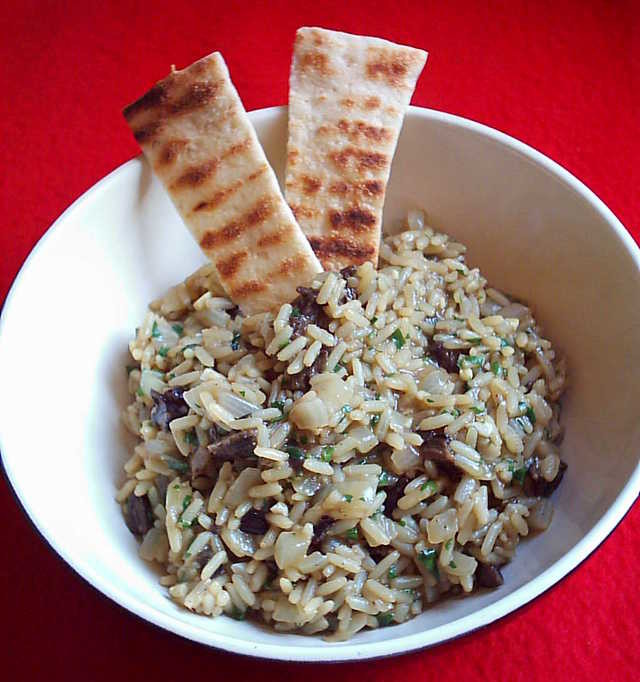
Mushroom risotto
In the south, olive oil is almost always used to cook with, and the sauces are mostly tomato based and spicy, eg. pasta all’arrabbiata. Agriculture plays a major part in the food industry here due to the warmer climate, as well as fresh seafood. Dried pasta is eaten every day, as well as fresh fruits and vegetables. Citrus fruits are grown in this part of Italy, along with wheat, olives, figs and peaches. The meat dishes tend to be of lamb, mutton, or pork.
The cuisine from central Italy is what the rest of the world knows as Italian food. It is very simply made with few ingredients. The sauces are mostly tomato based and foods are cooked in olive oil. Meat dishes, as well as dried or fresh pasta, are eaten daily. This is where most of the well known cheeses and cured meats come from.

Fresh pasta
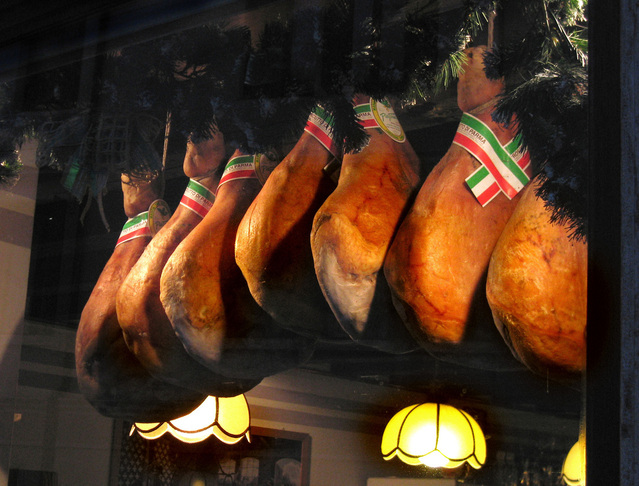
Hanging prosciutto
And by the way, it’s not gravy, it’s sugo (tomato sauce) or ragu (meat sauce)!
Subscribe to my blog and get more recipes and posts delivered right to your inbox!

